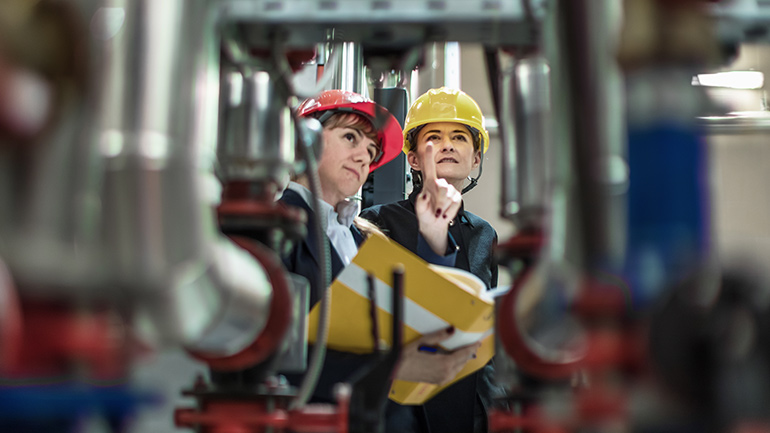COP26 takeaways: The role of the private sector
By: Sophie Dejonckheere
November 26, 2021 - 3 minutes
The dust is just settling around the announcements made at UNFCCC's 26th Conference of Parties (COP26) in Glasgow. The headline goal of keeping "1.5 alive" -- keeping Earth's temperature from rising above 1.5 degrees Celsius -- was arguably not met. Modelling by Climate Action Tracker on the updated Nationally Determined Contributions put expected global warming between 2.5 and 2.7 degrees Celsius by 2050.
This shortfall can be chalked up to a few key factors:
This shortfall can be chalked up to a few key factors:
- "Phasing down" instead of "phasing out" coal: COP26 was heralded as the conference that would consign coal to history. Although the final text did explicitly mention fossil fuels for the first time, it fell short of consigning coal to history. India and other countries watered down the language to commit to phasing coal down instead of out and eliminate "inefficient" fossil fuel subsidies. At least 40% of the world’s existing 8,500 coal-fired power plants must be closed by 2030 -- and no new ones built -- to have a chance of keeping warming below 1.5 degrees Celsius1.
- Climate finance pledges set on shaky credibility: $100 billion USD per year was pledged to developing countries from developed countries under the Paris Agreement and were not delivered. Developed nations delivered a formal apology during COP26 and recommitted to the same amount per year in climate financing, but with tarnished credibility. Countries that sorely need climate finance flows and are poised for potentially emission-intensive economic growth in the next decades, like India, Mexico, and Brazil, are using low carbon growth plans as a bargaining chip.
- Still no price on carbon: All eyes were on the last piece of the Paris Agreement that needed to be settled: development of a rulebook defining global carbon markets. Although negotiations did deliver a rulebook, it lacks some key features that are considered significant weaknesses. Legacy or "vintage" credits will be permitted in the system for some time, raising questions of additionality; and the levy on transactions that would help generate a fund for developing country adaptation finance did not get through. The final agreement includes a voluntary commitment for countries to contribute to this fund.
Momentum of the private sector
By these measures, the deals reached in the Blue Zone (the official negotiation zone) of COP26 can be fairly described as lukewarm or disappointing, and many climate activists have framed it that way. And yet, the mood at COP26 side events that targeted the private sector – companies, financial institutions, investors, rating agencies and others – was focused and cautiously optimistic. Panels were crowded with chief sustainability officers eager to exchange on how they've approached setting interim decarbonization targets and wealth managers explaining what metrics they use to assess companies' climate transition plans.
The key difference between the Blue Zone and the private sector at COP26 was momentum. The private sector showed up with a clear-eyed recognition that corporate net-zero announcements are being met with skepticism, and a consensus that the race is on to demonstrate real progress with credible transition plans. The private sector is arming itself for that race with a slew of practical coalitions, standards, benchmarks, and technological solutions that outpaced its public sector counterparts. The result is potentially significant contributions from the private sector: if all public and private sector commitments are met in time and in full, modelling shows global warming could potentially be limited to 1.8 degrees Celsius1.
This level of private sector engagement and contribution is a first and was noted in session after session in the side events. Until now, governments have subsidized green technology and made markets with regulations. At COP26, it was clear that the private sector is surging ahead of the public sector, championing innovative developments like S&P's climate science-based benchmarking, consolidated and standardized sustainability reporting, and real-time greenhouse gases data collection.
The key difference between the Blue Zone and the private sector at COP26 was momentum. The private sector showed up with a clear-eyed recognition that corporate net-zero announcements are being met with skepticism, and a consensus that the race is on to demonstrate real progress with credible transition plans. The private sector is arming itself for that race with a slew of practical coalitions, standards, benchmarks, and technological solutions that outpaced its public sector counterparts. The result is potentially significant contributions from the private sector: if all public and private sector commitments are met in time and in full, modelling shows global warming could potentially be limited to 1.8 degrees Celsius1.
This level of private sector engagement and contribution is a first and was noted in session after session in the side events. Until now, governments have subsidized green technology and made markets with regulations. At COP26, it was clear that the private sector is surging ahead of the public sector, championing innovative developments like S&P's climate science-based benchmarking, consolidated and standardized sustainability reporting, and real-time greenhouse gases data collection.
1 Source: International Energy Agency
Learn more about the link between investing and climate strategies

Director, Sustainable Finance & Corporate Transitions

Director, Sustainable Finance & Corporate Transitions

Director, Sustainable Finance & Corporate Transitions




